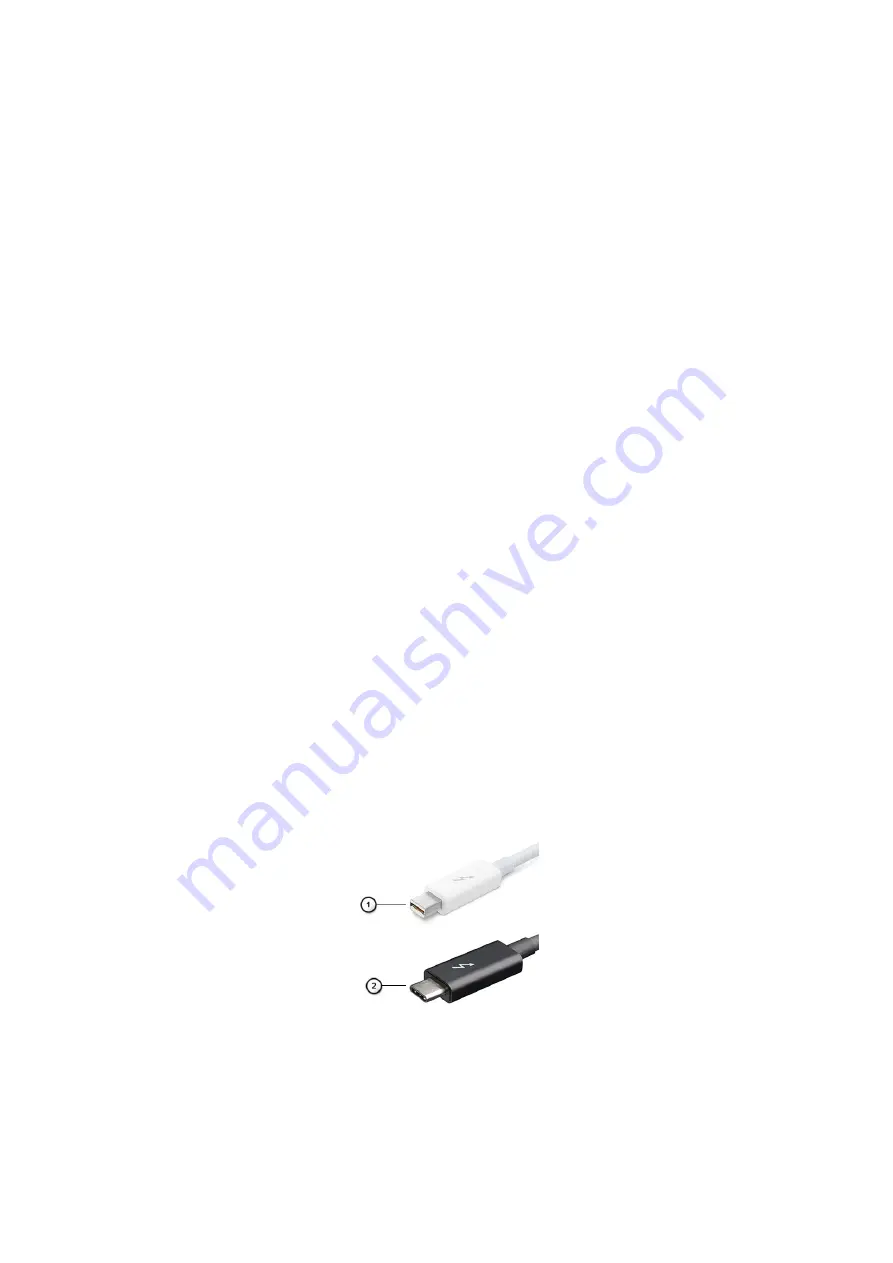
USB Type-C
USB Type-C is a new, tiny physical connector. The connector itself can support various exciting new USB standards like USB 3.1
and USB power delivery (USB PD).
Alternate Mode
USB Type-C is a new connector standard that is very small. It is about a third the size of an old USB Type-A plug. This is
a single connector standard that every device should be able to use. USB Type-C ports can support a variety of different
protocols using “alternate modes,” which allows you to have adapters that can output HDMI, VGA, DisplayPort, or other types
of connections from that single USB port
USB Power Delivery
The USB PD specification is also closely intertwined with USB Type-C. Currently, smartphones, tablets, and other mobile
devices often use a USB connection to charge. A USB 2.0 connection provides up to 2.5 watts of power — that'll charge your
phone, but that's about it. A laptop might require up to 60 watts, for example. The USB Power Delivery specification ups this
power delivery to 100 watts. It's bi-directional, so a device can either send or receive power. And this power can be transferred
at the same time the device is transmitting data across the connection.
This could spell the end of all those proprietary laptop charging cables, with everything charging via a standard USB connection.
You could charge your laptop from one of those portable battery packs you charge your smartphones and other portable devices
from today. You could plug your laptop into an external display connected to a power cable, and that external display would
charge your laptop as you used it as an external display — all via the one little USB Type-C connection. To use this, the device
and the cable have to support USB Power Delivery. Just having a USB Type-C connection doesn't necessarily mean they do.
USB Type-C and USB 3.1
USB 3.1 is a new USB standard. USB 3's theoretical bandwidth is 5 Gbps, while USB 3.1's is 10 Gbps. That's double the
bandwidth, as fast as a first-generation Thunderbolt connector. USB Type-C isn't the same thing as USB 3.1. USB Type-C is just
a connector shape, and the underlying technology could just be USB 2 or USB 3.0. In fact, Nokia's N1 Android tablet uses a USB
Type-C connector, but underneath it's all USB 2.0 — not even USB 3.0. However, these technologies are closely related.
Thunderbolt over USB Type-C
Thunderbolt is a hardware interface that combines data, video, audio, and power in a single connection. Thunderbolt combines
PCI Express (PCIe) and DisplayPort (DP) into one serial signal, and additionally provides DC power, all in one cable. Thunderbolt
1 and Thunderbolt 2 use the same connector as miniDP (DisplayPort) to connect to peripherals, while Thunderbolt 3 uses a USB
Type-C connector.
Figure 1. Thunderbolt 1 and Thunderbolt 3
1. Thunderbolt 1 and Thunderbolt 2 (using a miniDP connector)
2. Thunderbolt 3 (using a USB Type-C connector)
Technology and components
13
Содержание P80F
Страница 1: ...Latitude 5510 Service Manual Regulatory Model P80F Regulatory Type P80F002 December 2021 Rev A03 ...
Страница 17: ...Major components of your system 1 Base cover 2 Heatsink 3 Major components of your system 17 ...
Страница 23: ...3 Lift and remove the base cover away from the computer Disassembly and reassembly 23 ...
Страница 24: ...Installing the base cover Steps 1 Align and place the base cover on the computer 24 Disassembly and reassembly ...
Страница 25: ...2 Press the edges and sides of the base cover until it snaps into place Disassembly and reassembly 25 ...
Страница 26: ...3 Tighten the eight captive screws to secure the base cover to the computer 26 Disassembly and reassembly ...
Страница 30: ...4 Connect the battery cable to the connector on the system board 30 Disassembly and reassembly ...
Страница 50: ...4 Reroute the WLAN antenna cables 50 Disassembly and reassembly ...
Страница 66: ...3 Lift and remove the speakers away from the palmrest 66 Disassembly and reassembly ...
Страница 74: ...3 Connect the system fan cable to the connector on the system board 74 Disassembly and reassembly ...
Страница 93: ...3 Seat the system chassis on the display assembly Disassembly and reassembly 93 ...
Страница 98: ...98 Disassembly and reassembly ...
Страница 101: ...Disassembly and reassembly 101 ...














































